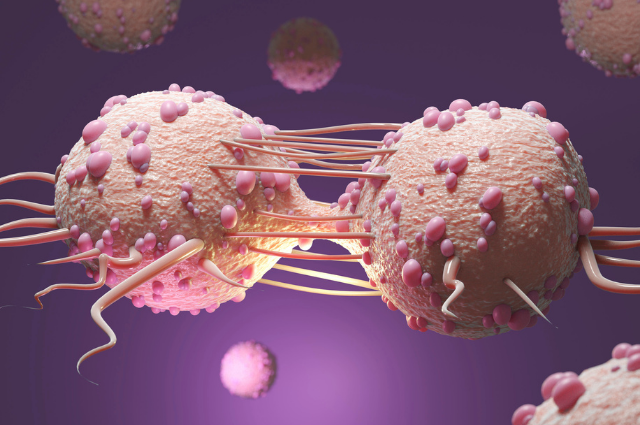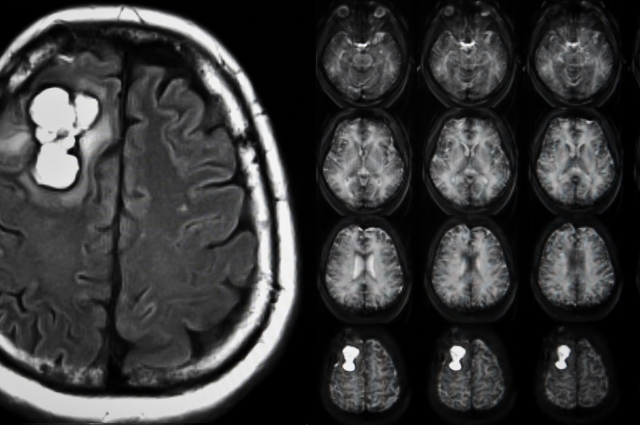What Causes Tumors? [Guide to Benign & Malignant Tumors]

Are you feeling fatigued lately? Are you experiencing too much sweating at night? Or are there any unusual lumps or moles in your body that suddenly showed up?
It’s easy to ignore these symptoms. However, if they happen more frequently and start to hinder your normal daily routine, it might be a sign that there is tumor growth.
Each cell in our bodies goes through a cycle. They can reproduce and replenish themselves when they become deficient or damaged, often without any problems.
However, things don’t always go as planned. These old or damaged cells can divide rapidly, passing abnormal copies of their DNA instead of eliminating the old cells. This eventually forms a tumor or mass that can be benign or malignant.
Keep reading to learn more about tumors, their causes, and the treatment options you need to know!
What is a Tumor?

The National Cancer Institute defines a tumor as an abnormal growth of mass of tissue that results when cells divide abnormally or do not die when they should.
So, why do tumors occur?
Most normal cells grow, divide, and replace each other in healthy bodies. As new cells form, the old cells will die. However, new cells can also form from cancer cells even if the body doesn’t require them.
Tumors develop if the balance between cell growth and death is disrupted.
Not all tumors are cancerous. Some are benign, while others can be malignant and spread throughout the body.
Tumors can develop in bones, organs, and joints. Sometimes they can only be detected with imaging tests like an MRI or CT scan, PET scan, and endoscopy. A biopsy is often needed to examine the tumor under a microscope.
What Causes Tumors?
Most cancerous tumors are caused by DNA mutations within your cells. Your DNA is a collection of genes that controls how cells function, grow and divide. Disruption of cell growth happens if the DNA changes. This disconnection can lead to cancerous cells.
Many factors can cause your genes to become mutated, resulting in benign or malignant tumor growth:
- Benzene and other toxic chemicals
- Drinking too much alcohol
- Environmental toxins, such as poisonous mushrooms or a type that can grow on peanuts (aflatoxins), are two examples of environmental toxins.
- Excessive sunlight exposure
- Genetic problems
- Obesity
- Radiation exposure
- Viruses
- Age
- Hormones
- Smoking
- immune disorder
Different Types of Tumors
Benign tumors
A benign tumor is often not dangerous or cancerous. They are unlikely to cause any damage to other parts of your body, even if they contain abnormal cells.
Non-cancerous abnormal cells are organized. When a pathologist examines a biopsy taken from the tissue, they look like normal, well-arranged, healthy cells.
The benign tumors are also not as aggressive as malignant tumors. They don’t invade nearby tissue and other parts of the body.
However, benign growths can cause pain and other problems if it presses against nerves or blood vessels, or if it triggers the overproduction of hormones.
Precancerous tumors develop when the body changes (hyperplasia and dysplasia). It may be necessary to remove benign tumors to confirm they aren’t cancerous and to relieve symptoms. Most benign tumors do not grow back.
The following are some types of benign tumors.
Adenomas – Adenomas are found in the epithelial tissue, a thin layer that covers organs and glands. These benign tumors do not start as cancer unless they change and become adenocarcinomas.
Fibromas – Fibromas can develop in connective tissue or fibrous tissue. They can also grow in other internal organs. They can develop into cancerous fibrosarcomas in rare cases.
Hemangiomas – Hemangiomas form when blood vessels become too large. A common example is a birthmark. Although these growths can often disappear on their own, treatments are highly advised if they are affecting eating, hearing, vision, or other functions.
Lipomas – Lipomas are benign soft tissue tumors made up of fat cells. They are usually movable, soft, and slow-growing tumors that can be found in the neck, back, neck, or shoulders.
Enchondroma – These benign bone tumors are found inside the bone marrow space and usually start in the cartilage.
Malignant tumors
Malignant tumors are cancerous. This means that their cells have undergone several abnormal DNA changes. They invade neighboring cells and multiply and divide at an alarming pace. They can copy themselves and spread their cancerous genes to other parts of the body.
It could be fatal if the cancer cells continue to grow and spread.
The body’s immune system can repair and remove abnormal cells (a process called apoptosis), but cancerous cells can pass unnoticed and take over the entire system.
A malignant tumor can spread to nearby tissues and pass through the bloodstream. The blood can transport some cancerous cells from the primary tumor to other locations. This is known as metastatic tumors or secondary cancer.
Although the tumor’s location is different from its origin, secondary or metastatic cancer is composed of cancer cells from the original site. For instance, lung cancer cells can spread to the liver if not detected nor treated immediately.
Different types of malignant tumors can arise in different types of cells. Examples include:
Carcinoma – These tumors are made up of epithelial cells that are found in the skin and tissues that cover the organs. Carcinomas can be found in the breast, stomach, prostate, and pancreas.
Sarcoma – These tumors originate from connective tissue such as cartilage and bones. They originate in the cells outside the bone marrow. Most soft tissue sarcoma tumors are considered malignant.
Leukemia – Leukemias affect blood tissues like bone marrow. The bone marrow produces large numbers of abnormal cells, which then enter the bloodstream.
Lymphoma – Lymphomas are caused by the immune system.
Cancer of the central nervous system – Cancer found in the spinal cord and brain tissues.
Germ cell tumors – These tumors form in the cells that make sperm or eggs. These tumors are most common in the testicles or ovaries, but they can also be found in the brain, abdomen, or chest.
How can tumors be detected?

Early diagnosis is crucial for benign tumors. This will allow you to determine its cause and plan for the necessary operations.
Tumors can be detected during a screening test such as:
- X-ray
- Ultrasound
- Computed Tomography scans (CT scans)
After the initial imaging, doctors will perform the next diagnostic tests.
- Lab tests are used to measure the levels of hormones and chemicals in urine and blood. If the fluids are high or low, a pathologist might diagnose cancer.
- Diagnostic imaging allows doctors to access the body to identify cancerous cells. The most common imaging procedures include MRI, CT, ultrasound, PET scan, X-ray, and CT scan. If a tumor is found, the radiologists will assess the images and determine whether it is cancerous or benign.
- A biopsy is performed to examine the tumor and determine if it is cancerous. The test involves the collection of a sample of tumor tissue that can then be examined under the microscope by pathologists.
How do doctors treat tumors?
The following treatment options may be used alone or in combination to treat tumors:
- Surgery. Benign tumors are often surgically removed.
- Chemotherapy. These drugs are administered to take down cancer cells and/or to stop their growth and spread. It affects the entire body.
- Chemoembolization. The procedure targets cancer at its source, maximizing the effectiveness of the drugs while minimizing harm to healthy cells and reducing side effects for the patient.
- Radiation Therapy. Targeted beams of radiation can kill cancer cells. New technology allows pinpoint accuracy, with the goal of minimizing radiation exposure to healthy surrounding cells.
- Radiofrequency Ablation (RFA). To reach the tumor, specialists place a needle under the skin. Radiofrequency energy is used to heat and scar tissue.
- Cryoablation. Similar to RFA, it is minimally invasive and uses a needle to remove the tumor. It uses radiofrequency heat instead of extremely cold gas.
- Tumor Ablation. An image-guided procedure in which tumors are removed using extreme temperatures.
- Immunotherapy. Immunotherapy drugs either help boost the immune system so that it has more strength to fight cancer cells; or they can target and destroy certain proteins, or receptors, on cancer cells to prevent them from outmaneuvering the immune system.
Other FAQs About Tumors
What causes brain tumors?
The cause of brain tumor is not always known but there are some risk factors that you need to watch out for:
- Old age.
- Chemical exposures (solvents, pesticides, and oil products).
- Family history (Research shows that abnormal gene changes cause some rare inherited cancer syndromes that increase the risk of developing brain and spinal cord tumors).
- Exposition to viruses, infections, and allergens.
- Radiation exposure.
- Ionizing radiation.
- Seizures and head injury.
- N-nitroso compounds.
Can stress cause tumors?
According to the National Cancer Institute, stress can lead to a variety of health issues, but there is no evidence it can cause cancer.
There could be many ways that psychological stress and cancer may appear to have apparent links. People who are under stress might develop unhealthy behaviors such as smoking, drinking alcohol, and overeating, which are among the causes of tumor growth.
Seek Medical Attention Immediately

Consult your doctor if you notice any unusual growths, moles, skin rashes, and other symptoms in your body. Self-diagnosing tumors will not do you any good.
Early diagnosis can help you receive the right treatment for your condition.
Our vascular specialists and interventional radiologists here at VISP are more than capable of performing minimally invasive procedures to diagnose and treat tumors effectively.
The procedures we use are in line with regulations provided by the National Cancer Institute.
Contact us today to book an appointment!
Vascular & Interventional Specialists of Prescott was formed in 2010 by a group of subspecialty radiologists that perform numerous minimally-invasive, low-risk procedures using the tools of our trade for guidance—x-ray, ultrasound, CT scan, and MRI. The team’s goal is to educate patients and medical communities, while also providing safe and compassionate health care, with rapid recovery times and low risk of complications.
